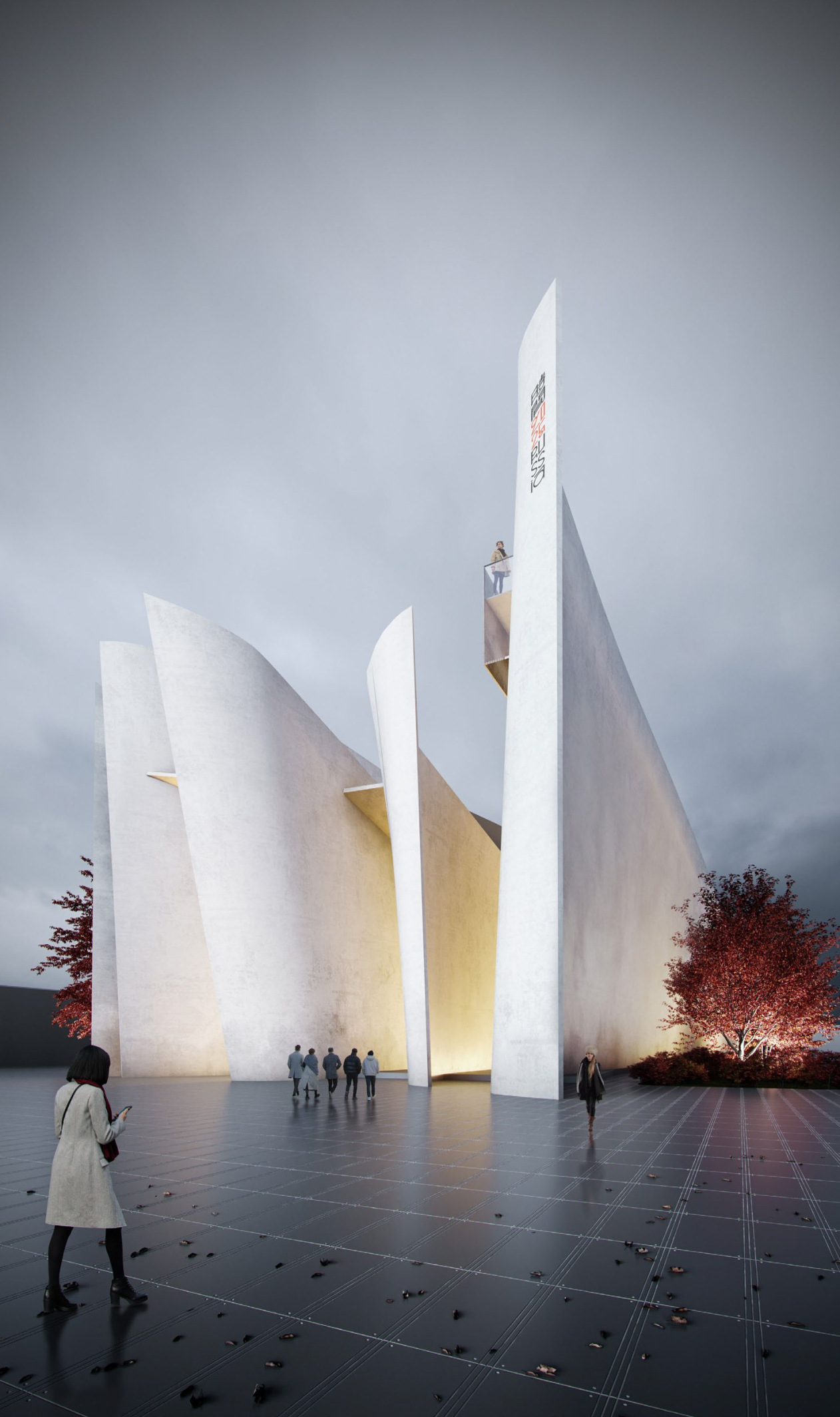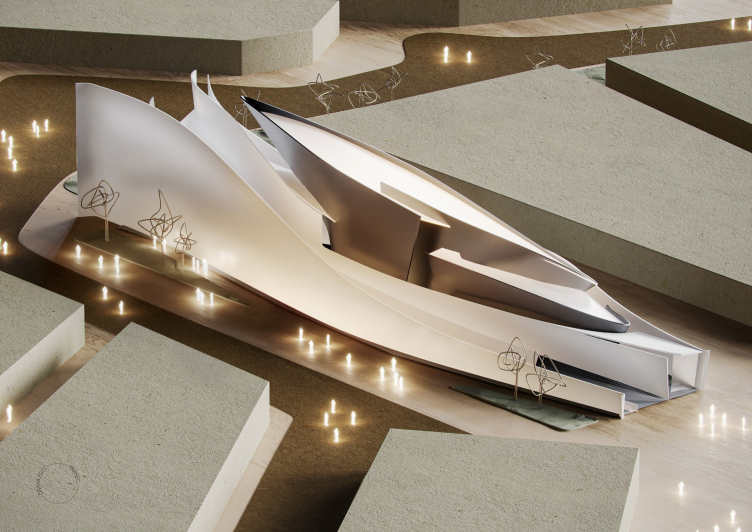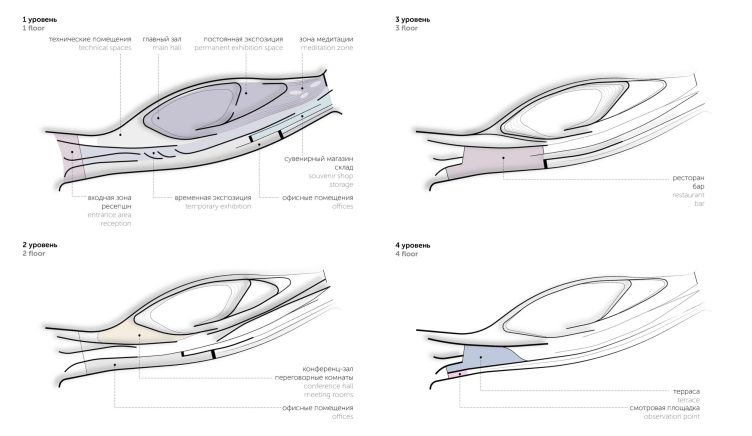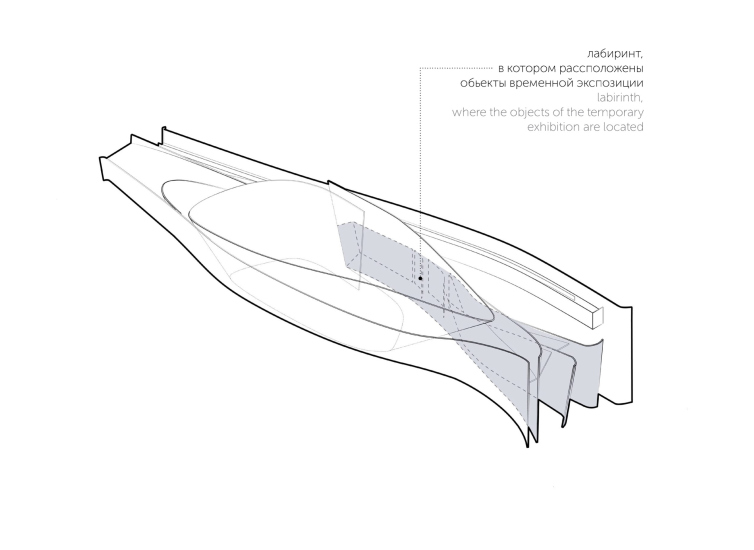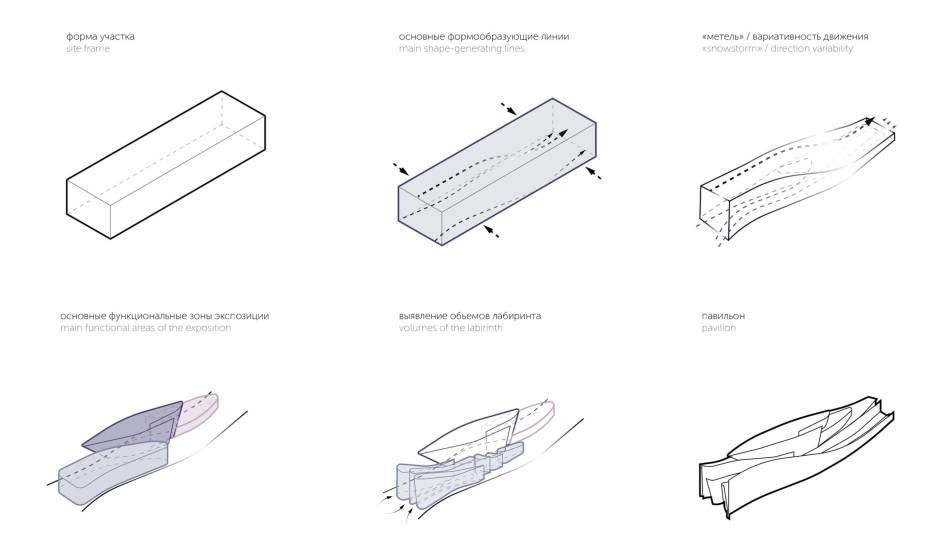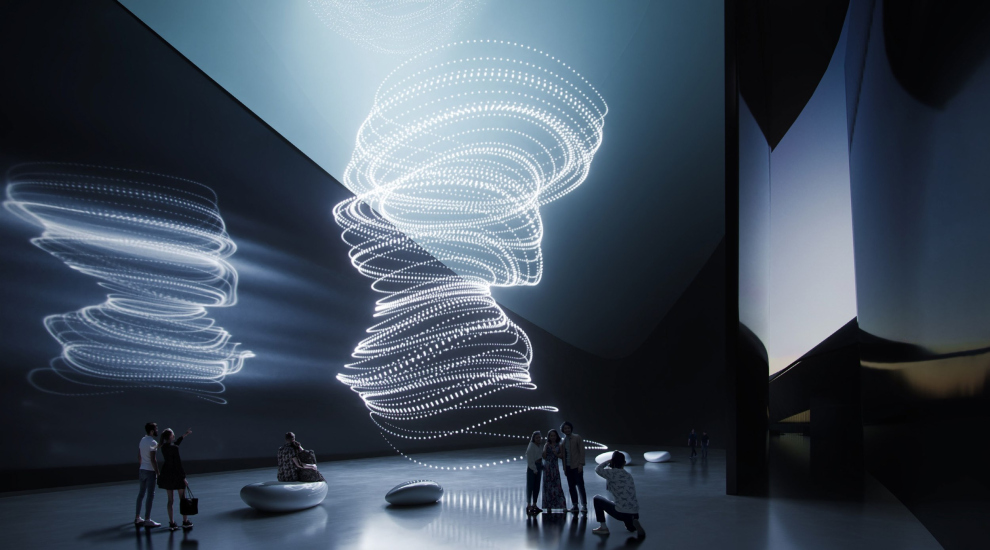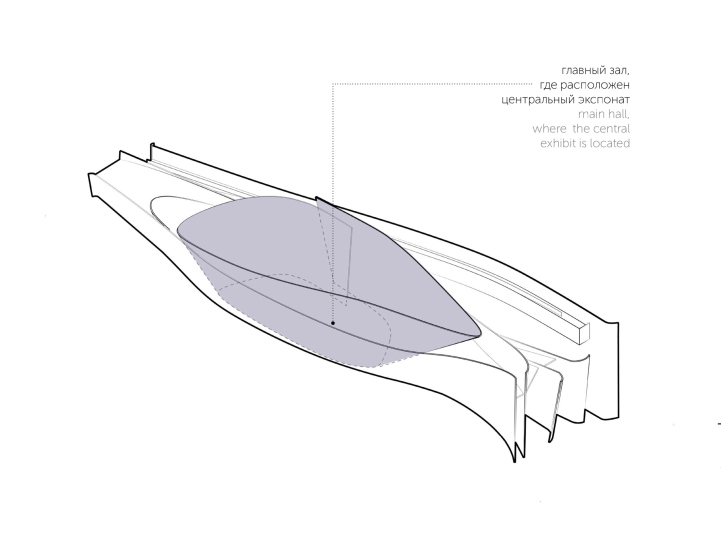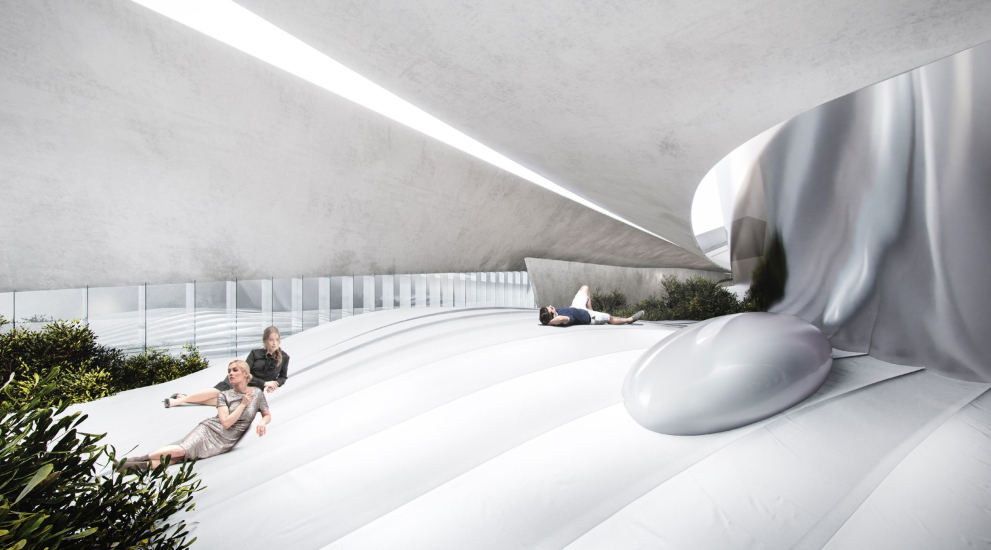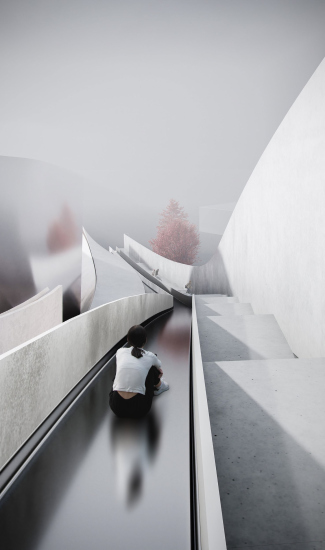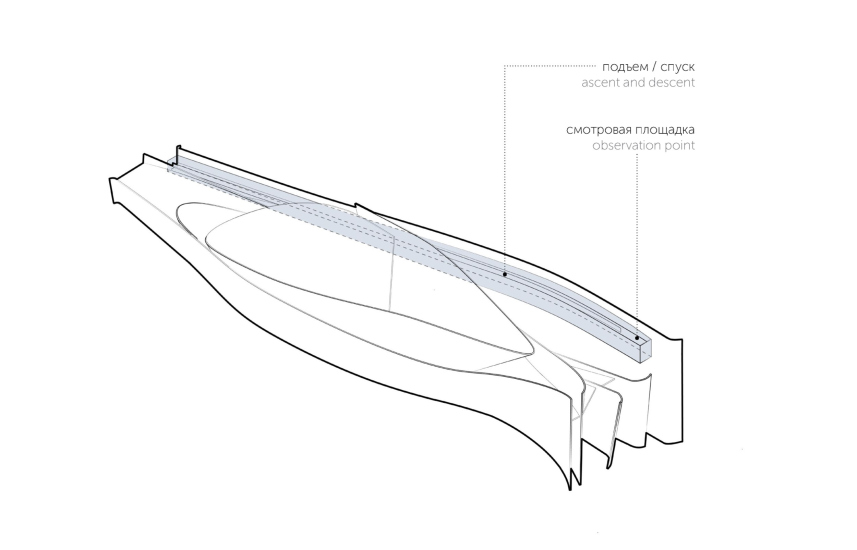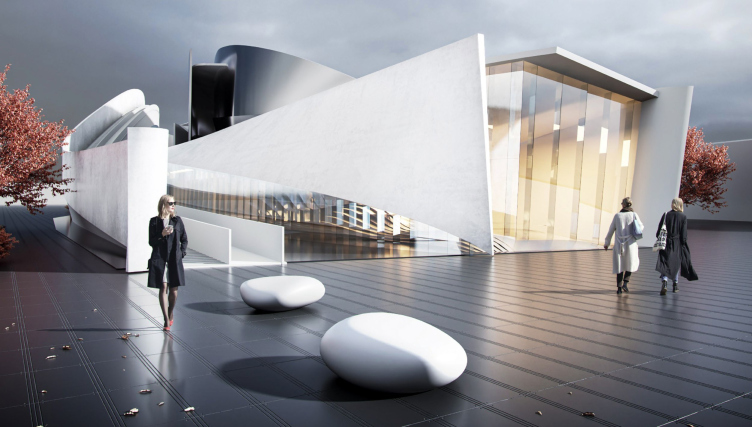The concept “Russian pavilion at EXPO 2025”.
Copyright: © PARSEC architects
This is not surprising, as the leader of the bureau, Dashi Namdakov, is primarily a sculptor, and Parsec’s architecture is mainly sculptural, built on flexible surfaces, as seen in the architecture of “Potapovo” metro station on Moscow’s Sokolnicheskaya Line. In this case, it’s interesting that the “sculptural” direction, known in architecture as “neo modernism” or “starchitecture”, is indeed closely related to a sculptor’s work, and there is indeed some historical truth in it.
This style is rightfully valued at EXPOs; the first thing that comes to mind is the UAE pavilion with its wings, designed by Santiago Calatrava, which we saw at EXPO 2022 in Dubai, and the Qatar pavilion, also designed by this architect. Grigory Revzin once said that “they don’t do this anymore in Europe” – but who cares? However, Parsec’s proposal resonates most of all with Norman Foster’s UAE Pavilion at the Milan EXPO 2015. There, too, flexible walls formed the path for the visitors to proceed to the core of the central hall.
To me, Parsec’s pavilion looked like a fish.
More precisely, like a semi-abstract suspension in the shape of a fish, made by one of the artists of the Moscow Artists’ Union during the late Soviet era, which correlates well with references to 1970s sculpture.
The concept “Russian pavilion at EXPO 2025”.
Copyright: © PARSEC architects
In the Parsec project, the visitors are not escorted out, but greeted by the hall hosting temporary exhibitions – a kind of corridor symbolizing the life path of a human being. The walls, both solid and incrementally divided, block three narrow passages on the right, not winding but undulating, while on the left, the path is straight and slightly wider. Here you cannot help but recall Jesus Christ’s words about the broad and narrow paths; in some monasteries, by the way, the wide path through the gate is deliberately closed so that the pilgrim (or in our case, the visitor) enters by the narrow path of the righteous.
But then again, however, in this case, the choice depends not on the unwillingness to squeeze through the small door, but on the interest in the exhibition – you will definitely learn more by taking “the narrow path”.
The concept “Russian pavilion at EXPO 2025”. The functional layout
Copyright: © PARSEC architects
Next, we enter the main hall, whose plan resembles a fish’s swim bladder. According to the program, this main hall should host the Tree of Time. For Parsec, it turned out to be abstract and media-oriented – no literalism, just a light sculptural whirlwind. One can imagine that here lies a metaphorical “nuclear reactor”, generating all the sculptural whirls of the pavilion.
There is an intriguing detail, not related to the competition brief in any way – a large relaxation hall at the end of the pavilion. The architects call it “Mendeleev’s Dreams Hall” – I’ll remind you that the scientist saw his table of elements in a dream (or so we are told) – and the architects speak about the importance of sleep for the transition from short-term to long-term memory – in short, they suggest that we should take a rest here.
In the project by Reserve Union, such a relaxation area was the connecting interior space of the amphitheaters, and in the ASADOV Architects project it was a terrace on the roof. But what’s interesting here is that they’re not just talking about rest, but even say that we can actually take a nap here. Indeed, at trade shows and exhibitions, you sometimes do feel like curling up somewhere and grabbing some shuteye.
Finally, to conclude the exposition for, I assume, well-rested people, there’s a ramp leading up to the terrace at the top. From there, according to the architects’ proposal, one could slide down a slide. It brings to mind the Luxembourg Pavilion Metaform in Dubai 2020, only there the slide was winding and enclosed, while here it’s open and gently sloping – like the Russian soul, evidently. What’s even more impressive here is the architects’ comment: “...this unexpected accent will allow the visitors heading to other pavilions to unwind and tune into the wave of joy, lightness, and pleasure so rarely associated with Russia”.
The project is attractive with its flexible lines, respect for human fatigue, and somewhat meditative attitude towards space. Although, to be honest, judging from the images shown, it’s difficult to say how, for example, the narrow entrance corridor would be perceived. And at the far end, the “tail” (or mouth?) of the “fish” is not as impressive as at the entrance, speaking more about deconstruction than sculpture.
The concept “Russian pavilion at EXPO 2025”.
Copyright: © PARSEC architects

